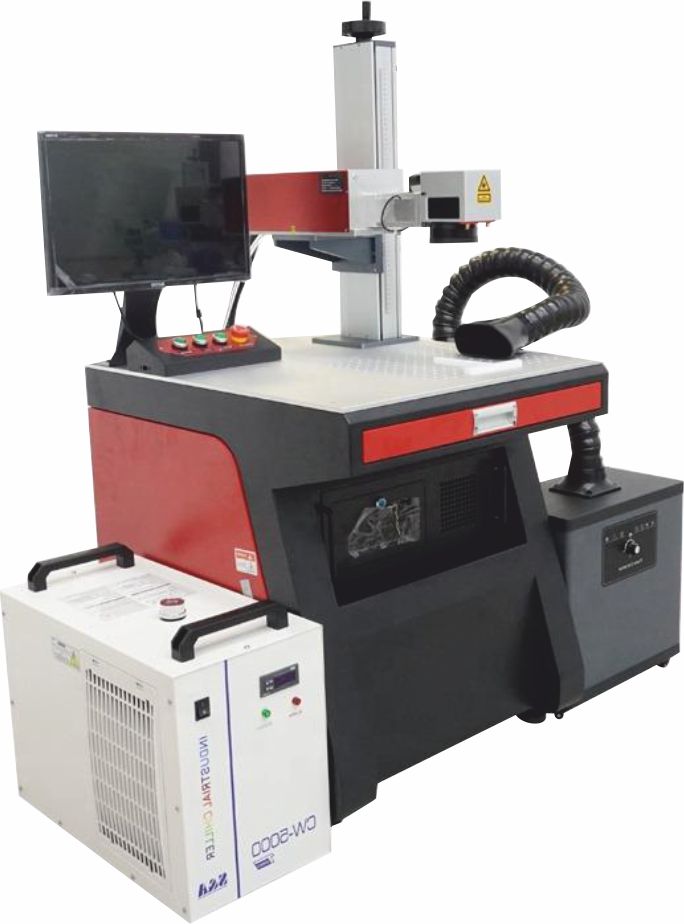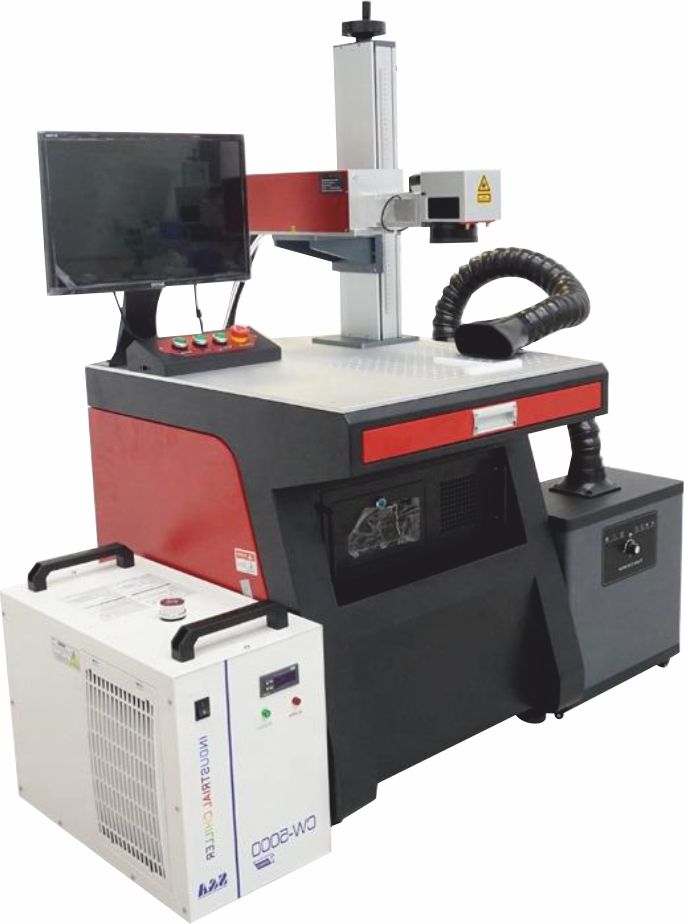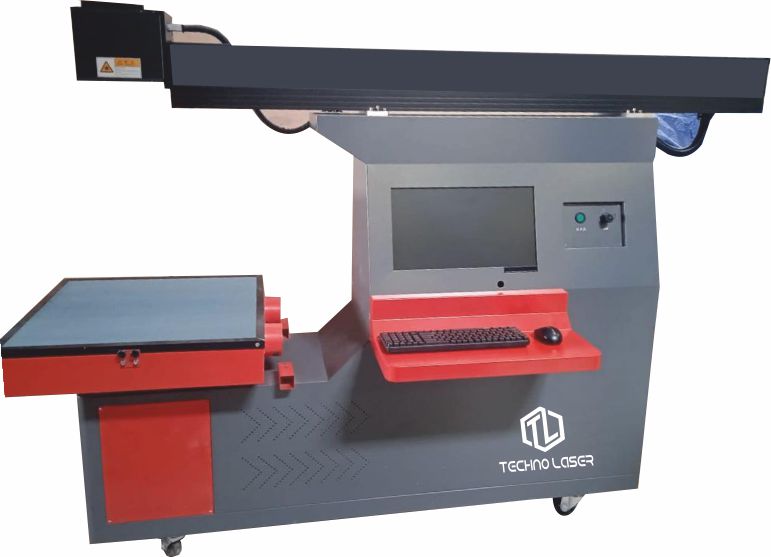
Fiber Laser Marking Technology
Fiber Laser Marking Technology
Introduction
Fiber Laser Marking Technology is a state-of-the-art solution for creating high-precision, permanent marks on a wide range of materials—especially metals and industrial plastics. Using a fiber optic laser source, this method delivers concentrated light energy to the surface, enabling fast, contactless, and highly detailed markings without physical wear or consumables.
This technology is widely adopted across industries including automotive, aerospace, electronics, medical devices, and jewelry due to its unmatched reliability, versatility, and cost-efficiency. From serial numbers and barcodes to logos and decorative text, fiber laser marking ensures clarity, permanence, and quality in every impression.
Applications
Fiber laser marking is used in a wide variety of sectors and for diverse marking needs:
Automotive Industry
-
Engine parts, VIN codes, gearboxes
-
Component tracking and traceability
Medical & Healthcare
-
UDI (Unique Device Identification) compliance
Electronics & Electrical
-
PCB components, microchips, connectors
-
Anti-counterfeit QR and Data Matrix codes
Manufacturing & Engineering
-
Tool and die marking
Jewelry & Luxury Goods
-
Engraving names, logos, and serial numbers on metals
-
Personalization on gold, silver, platinum
Aerospace & Defense
-
Aircraft parts, weapons systems, tags with traceability data
Compatible Materials
Fiber laser markers are compatible with a broad range of materials:
Metals
-
Aluminum
-
Brass
-
Copper
-
Titanium
-
Nickel
-
Chrome
-
Silver / Gold
-
Carbide
Plastics (Laser-sensitive types)
-
ABS
-
Polycarbonate
-
PVC
-
PEEK
-
Nylon (PA)
-
HDPE
Other
-
Anodized aluminum
Some ceramics
-
Certain leathers (for branding)
-
Carbon composites
Common Uses
-
Part and product traceability (serial numbers, barcodes, QR codes)
-
Regulatory markings (FDA, CE, RoHS)
-
Tool and equipment identification
-
Security marking and anti-counterfeit labeling
-
Industrial coding for automation and tracking
-
Personalized gifts and luxury product customization
Benefits of Fiber Laser Marking Technology
| Feature | Benefit |
|---|---|
| Non-contact marking | No mechanical wear or tool impact |
| Permanent and durable | Resistant to abrasion, chemicals, heat |
| Fast and efficient | High-speed scanning with low downtime |
| Cost-effective | No consumables like ink or acid |
| Eco-friendly | No emissions, chemicals, or waste |
| Low maintenance | Long laser life (~100,000 hours) |
| Versatile integration | Easily fits into automated production lines |
| High precision | Capable of marking at micron-level accuracy |
-
Laser Source: Fiber laser with 20W, 30W, 50W, or 100W options
-
Marking Speed: Up to 10,000 mm/s
-
Beam Quality: M² < 1.2 for fine detail
-
Marking Area: 70x70 mm up to 300x300 mm
-
Software: EZCAD (standard) or custom interfaces
-
Cooling System: Air-cooled, energy-efficient
-
Rotary Fixture (optional): For 360° marking on cylindrical parts
-
Red Dot Positioning: For preview and alignment
-
Class I Safety Enclosure: Optional protective casing
Conclusion
Fiber Laser Marking Technology stands as a cornerstone of modern industrial identification and customization. Its contactless nature, high speed, and precision make it superior to traditional marking techniques like stamping or chemical etching. Whether you’re a factory manager, a jeweler, or a medical device manufacturer, fiber laser marking offers unmatched clarity, durability, and efficiency.
Choose fiber laser technology. Choose speed, precision, and reliability.
Extended FAQ – Fiber Laser Marking
Q1: What is fiber laser marking?
A: Fiber laser marking is a method of applying permanent marks to a surface using a concentrated laser beam generated through fiber optics. The beam interacts with the material surface, creating a visible and often tactile mark.
Q2: Is the marking permanent?
A: Yes. Fiber laser marks are extremely durable, resistant to wear, chemicals, and high temperatures, making them ideal for industrial and regulatory applications.
Q3: What’s the difference between laser marking, engraving, and etching?
-
Marking: Surface alteration (oxidation, annealing) with no material removal
-
Engraving: Material is vaporized or removed to create depth
-
Etching: Similar to engraving but shallower; often used interchangeably
Fiber lasers can do all three, depending on settings.
Q4: What materials can be marked?
A: Metals and many plastics are ideal. Common materials include stainless steel, aluminum, copper, ABS, and polycarbonate. Some coated ceramics and leathers are also compatible.
Q5: How deep can fiber laser engraving go?
A: Depending on power and material, engraving depths can range from 0.01 mm (fine detail) up to 1 mm or more with high-powered systems (e.g., 50W+).
Q6: Does it require consumables?
A: No. Unlike inkjet or chemical methods, fiber laser marking requires no inks, chemicals, or stencils—reducing operational costs significantly.
Q7: Is it environmentally friendly?
A: Yes. It’s a clean, dry process with no emissions, no waste, and no hazardous substances.
Q8: What file types does the software support?
A: Most fiber laser software (e.g., EZCAD) supports formats like AI, DXF, PLT, BMP, JPG, PNG, and variable data imports (e.g., CSV, Excel).
Q9: Can I automate the marking process?
A: Yes. Fiber laser systems integrate easily with conveyors, robotics, and PLC systems, enabling inline automation for industrial production.
Q10: Can I mark on curved surfaces?
A: Yes. With a rotary axis or adjustable focal system, the laser can engrave round or curved objects such as pipes, rings, and tumblers.
Q11: Is it safe?
A: Yes. When used with proper safety gear and enclosures (Class I or IV), fiber laser marking is a safe and controlled process.
Q12: How long does a fiber laser last?
A: The average fiber laser source lasts up to 100,000 hours, making it a reliable long-term solution for high-volume operations.
Related Keywords
Quick Enquiry
Our Products
Popular Links
Get In Touch
05, Sanskar Industrial Estate -2 , In side of Pavan Industral Esate Gate No -2 ,Opp Gopal Charan Estate Bakrol ,Ahmedabad - 382430, Gujarat, INDIA.
technolaser11@gmail.com
+91 8200009229
+91 9157575733
© Techno Laser. All Rights Reserved.
Designed by industrieslead.com






